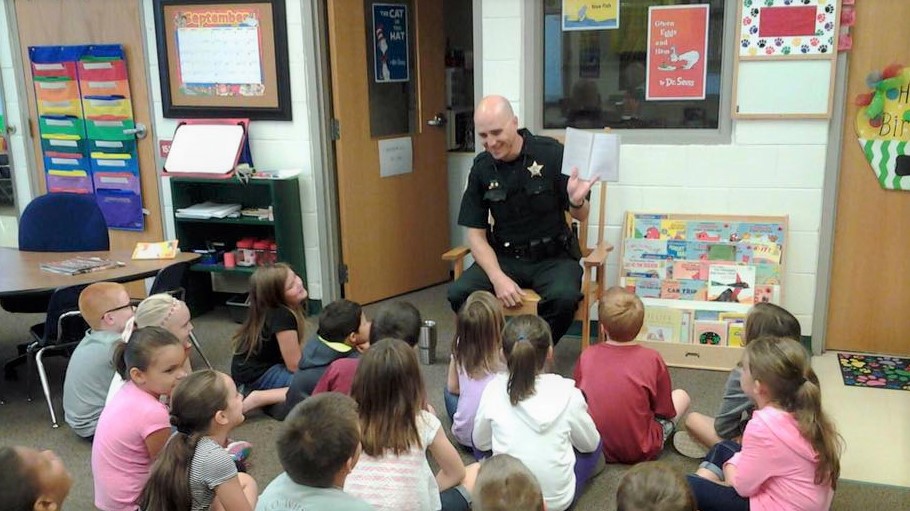The Advantages: Benefits of School Resource Officers (SROs)
In today’s educational landscape, School Resource Officers (SROs) play a pivotal role in fostering safe and supportive learning environments. This article delves into the multifaceted benefits that SROs bring to schools, examining their impact on safety, climate, and community relationships.
Safety and Security Enhancement:
One of the primary benefits of having School Resource Officers in schools is the enhancement of safety and security. SROs are not just uniformed figures; they are trained professionals who contribute significantly to the prevention and response to potential incidents. Their presence alone acts as a deterrent, creating a secure atmosphere for students, staff, and the entire school community.

Positive Impact on School Climate:
Beyond the physical aspect of safety, SROs have a profound influence on the overall school climate. By actively engaging with students, fostering positive relationships, and being approachable figures, SROs contribute to a sense of well-being. The result is a school environment where students feel safe, supported, and motivated to excel academically and socially.
Building Trust and Relationships:
School Resource Officers go beyond law enforcement; they become integral members of the school community, building trust and positive relationships with students. Through open communication and mentorship, SROs create an environment where students feel comfortable seeking guidance. This trust is the foundation for effective collaboration in maintaining a safe and nurturing school atmosphere.
Collaborative Approach to Problem-Solving:
An essential benefit of having SROs in schools is their collaborative approach to problem-solving. Working hand-in-hand with school staff, SROs address issues proactively. They engage in open dialogues, identify challenges early on, and implement strategies to create a positive impact. This collaborative model ensures a holistic approach to maintaining a secure and conducive learning environment.
Community Engagement and Outreach:
SROs extend their influence beyond school walls, actively engaging with the broader community. Community outreach programs led by SROs bridge the gap between law enforcement and the local population. These initiatives not only enhance community relations but also create a network of support that benefits both the school and the surrounding neighborhoods.
Prevention and Education Programs:
SROs play a crucial role in implementing prevention and education programs within schools. These initiatives cover a spectrum of topics, from safety drills to educational workshops. SROs contribute to creating a proactive environment where potential issues are addressed before they escalate. By focusing on prevention, they empower students with knowledge and tools to navigate various situations.
Mental Health Support:
Recognizing the significance of mental health in the educational landscape, SROs are increasingly involved in providing mental health support to students. Their training goes beyond law enforcement, encompassing the understanding and identification of mental health concerns. SROs become approachable figures, offering guidance and resources to students in need, and contributing to the overall well-being of the school community.
Addressing Bullying and Substance Abuse:
SROs actively address critical issues such as bullying and substance abuse within schools. Through education, intervention, and support programs, they create an environment where these issues are tackled head-on. SROs work alongside educators and counselors to implement strategies that foster a culture of respect, empathy, and healthy decision-making among students.
Training and Preparedness:
A distinctive advantage of School Resource Officers lies in their rigorous training and preparedness. SROs undergo specialized training to handle diverse situations, ensuring they are well-equipped to respond effectively to emergencies. Their preparedness extends to collaborating with school staff on drills and creating a secure environment that prioritizes the safety of students and faculty.
Real Stories and Testimonials:
The impact of SROs is best captured through real stories and testimonials from schools that have experienced positive outcomes. These narratives provide authentic perspectives on how SROs contribute to a safer, more supportive educational environment. By sharing these success stories, we aim to illustrate the tangible benefits observed in various schools, fostering a deeper understanding of the positive influence of School Resource Officers.
Frequently Asked Questions (FAQs) About School Resource Officers in Schools
1. What is the role of a School Resource Officer (SRO) in a school?
An SRO is a certified law enforcement officer responsible for providing safety, mentorship, and community engagement within a school setting.
2. How do School Resource Officers contribute to school safety?
SROs enhance school safety by actively preventing and responding to potential incidents, collaborating on safety drills, and fostering a secure environment.
3. Do School Resource Officers build relationships with students?
Absolutely. SROs play a crucial role in building trust and positive relationships with students through mentorship, approachability, and open communication.
4. What collaborative initiatives do School Resource Officers undertake in schools?
SROs engage in collaborative problem-solving, working with school staff to address issues proactively and maintain a positive learning environment.
5. How do School Resource Officers contribute to community engagement?
SROs actively engage with the community through outreach programs, fostering positive relationships and creating a network of support.
6. What preventative measures do SROs implement in schools?
SROs implement prevention and education programs, covering safety drills, workshops, and initiatives that empower students with knowledge.
7. In what ways do School Resource Officers provide mental health support to students?
SROs receive training to identify and address mental health concerns, becoming approachable figures who offer guidance and resources to students.
8. How do SROs address issues like bullying and substance abuse?
SROs actively address bullying and substance abuse through education, intervention, and support programs, creating a culture of respect and healthy decision-making.
9. What specialized training do School Resource Officers undergo?
SROs undergo rigorous training to handle diverse situations, ensuring they are well-prepared to respond effectively to emergencies in a school setting.
10. Can you share success stories from schools with positive experiences with School Resource Officers?
Certainly. Real stories and testimonials from schools illustrate the tangible benefits of SROs, providing authentic perspectives on their positive influence.
Conclusion:
In conclusion, the benefits of School Resource Officers in schools are far-reaching. From enhancing safety and fostering positive school climates to addressing critical issues and providing mental health support, SROs play a multifaceted role in creating a secure and nurturing educational environment. By understanding and appreciating the diverse contributions of SROs, we can collectively work towards building safer, more resilient communities within our schools.




